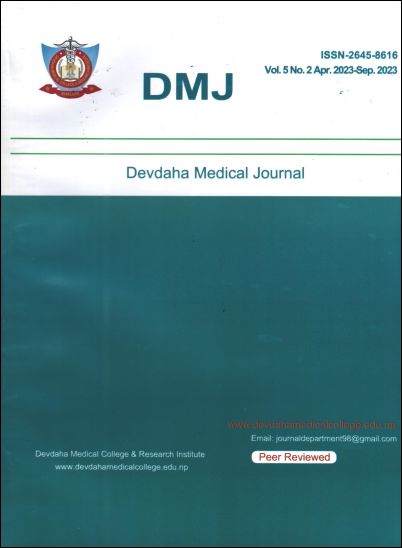Prevalence of Intestinal Worm Infestation and its Associated factors among Children in Rural Village of Eastern Nepal: A community based study
DOI:
https://doi.org/10.3126/dmj.v5i2.69793Keywords:
Ascaris lumbricoides, Microscopy, Parasites, Prevalence, SanitationAbstract
Introduction: Parasitic diseases have been with mankind since time immemorial and even today they are important obstacles to the development of economically less favoured countries. According to the World Health Organization estimates, 870 million children live in the areas highly prevalent to them. The prevalence varies in Nepal from 13%-81% even up to 100% in some rural areas. Periodic community based surveys are important to assess the intensity of infection and foster the preventive strategies.
Method: A community based qualitative and quantitative cross sectional study was carried out in the department of Microbiology, Nobel Medical College from May 2022 to Dec 2022. The data was collected using various questionnaires and then plastic containers were distributed to bring stool sample for examination using standard methodology.
Result: Among 200 samples, 38 (19%) showed parasitic infections in which 17% showed single and 2% showed mixed parasitic infection. The highest prevalence of parasitic infection was seen in age between 5-10 years and males outnumbered females (M:F=1.7:1). The majority of them were helminths and high prevalence of intestinal parasitic infection was seen in participants who had gastrointestinal symptoms, hand-washing without soap; irregular/no nail trimming, water without purifying and those who missed biannual deworming.
Conclusion: The present study reveals high prevalence of intestinal worms in the study population which indicates living conditions and low standards of sanitation in the society and calls for long term control measures to improve their living conditions, including treatment of the infected individuals.




